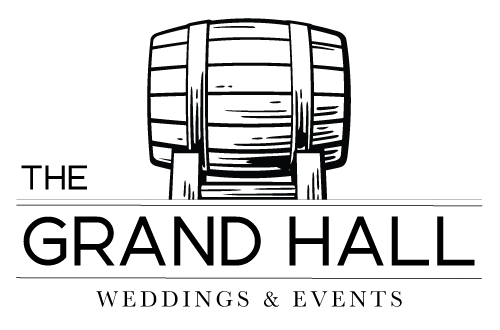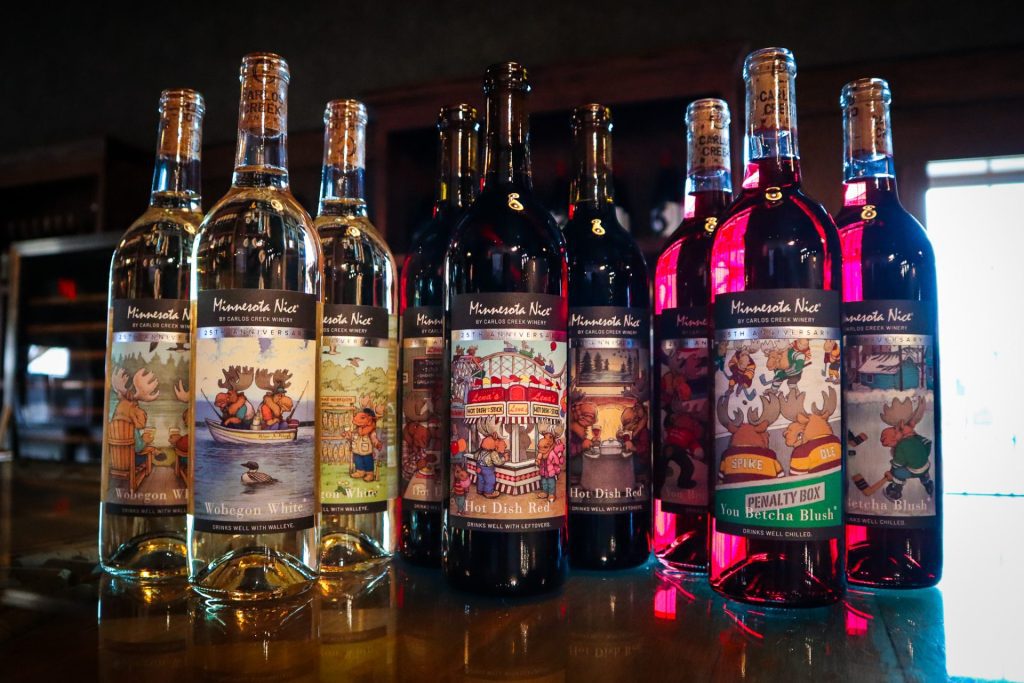GRAPEVINE SURVIVAL IN THE BOLD, COLD NORTH
I’ve been asked often over this past year of CRAZY WEATHER, how are our grapevines doing? It’s a great question! Our 27 acres of vines are the agricultural heart of our operation. And anyone who farms or gardens knows that when you grow plants, you live or die by weather. This last year has delivered up some pretty wild weather. Crazy though it’s been, it hasn’t been overly detrimental to our grapevines. To understand why, it’s helpful to know a few things about grapevines in general, and Cold Climate Grapevines in particular.
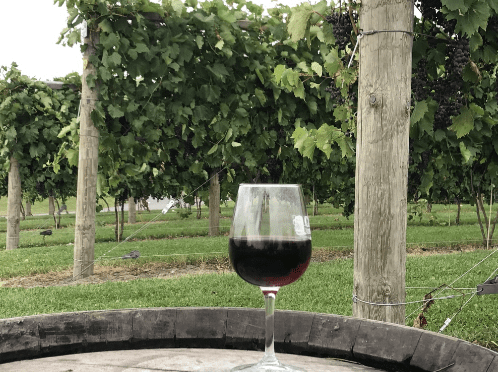
GRAPEVINES ARE WOODY PERENNIALS
Unlike corn or soybeans, grapevines do not have to be planted each year. So we don’t have to worry about wet springs preventing planting or drowning our seeds. Think of them more like a bush, with a really long life span. Grapevines can survive 100 years or more. They have deep (9’ or more) roots and prefer to grow on rocky or sandy hillsides – making them excellent at controlling, not contributing to, soil erosion.
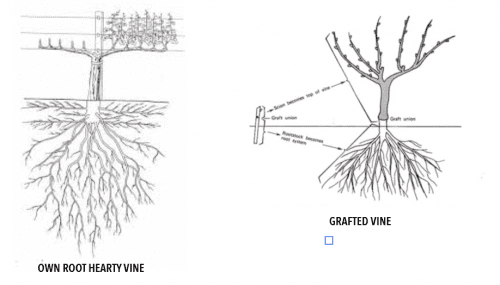
COLD CLIMATE GRAPEVINES ARE GROWN ON THEIR OWN ROOTS
Grapevines such as Cabernet and Chardonnay, which are grown in more temperate climates are almost always grafted on vigorous rootstock. The rootstock helps increase production of grapes and makes the vines more resistant to diseases and pests. Native American grapevines are the rootstock of choice for most vineyards, and saved European grapevines from near extinction from the root louse Phylloxera. Cold Climate grapes, such as Frontenac and Crimson Pearl, are a hybrid of European grapes and Native American grapes. The result of these crosses is a grape that is naturally disease and pest resistant without the need for grafting.
WINTER WEATHER CHALLENGES
Winter can be very challenging for grapevine survival particularly:
Extreme Cold
Minnesota cold is a “dry” cold, and long stretches of extreme cold can desiccate the exposed parts of our vines. Here at Bold North Cellars, our vineyard crew sprays our vines with a polymer to “seal in” moisture and provide protection from harsh winter winds. Additionally, because our vines are grown on their own roots, in the event the “top” of the vine dies, in most cases, the roots will survive and the top will regrow in a season. With grafted plants, you have to start all over – meaning 4-5 years before you have a productive vine.
Snow
Snow is like a down coat for our vines roots. Without it, frost is driven deep into the ground, damaging roots and delaying bud break. This year, the snow is SO DEEP that it is covering the fruiting branches (arm) in many places, providing additional protection for the above ground parts of our vines. Every inch means less exposure to extreme temperatures and wind. So we are loving the snow! This year’s deep snow pack will be challenging for our spring pruning crew – might have to try pruning with snowshoes!
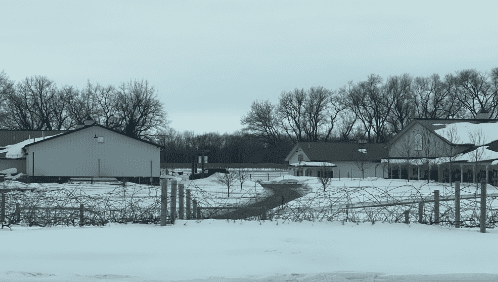
SPRING-SUMMER-FALL WEATHER CHALLENGES
Minnesota summers are generally very kind to our vines. We usually get enough rains and heat to mature our crop and rejuvenate our vines. And when we don’t, their deep roots and naturally low water needs, makes them quite adaptable to long periods of drought, like we experienced last summer. But there are still a couple of summer challenges we confront:
Humidity
Humid conditions, especially in the spring, are a breeding ground for fungus. Grapes are susceptible to a number of fungal diseases. We use a proactive spring spray program along with cultural practices to control fungus at Bold North. Wide, well-mowed vineyard rows, selective leaf removal, exposing clusters to the sun and removal of cuttings from pruning increases airflow and reduces the breeding ground for fungus.
Late and Early Frosts
A late spring frost, just before or after bud break, can wipe out that season’s crop and is one of our greatest challenges. An early fall frost that kills the leaves (less likely than spring frosts) can halt maturation of the grapes, resulting in high acid-low sugar fruit. In addition to proper site and variety selection, wind machines, smudge pots, and overhead sprinkling are all methods used by vineyards to protect vines from untimely frosts. Here at Bold North, we use overhead sprinkling using our air blast sprayers just as temperatures dip to freezing – usually around 4:00 AM! This type of protection only works for temperatures between 24 and 32 and requires continuous applications of water. Thankfully, since we grow a number of varieties, with different bud break and harvest maturity dates, we generally only have to protect the most vulnerable portion of the vineyard at one time. But this has absolutely saved our crop on numerous occasions.
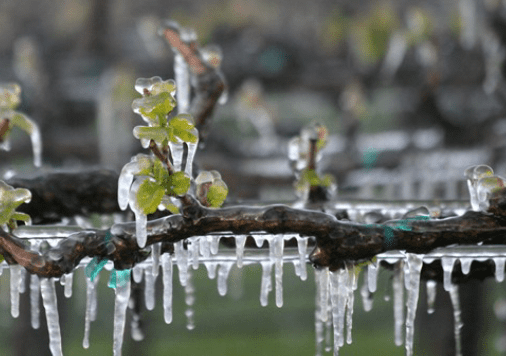
Follow us on Facebook and Instagram to keep up with the latest happenings in the vineyard and at the winery. Want to be the first to know? Sign up for our exclusive newsletter.
